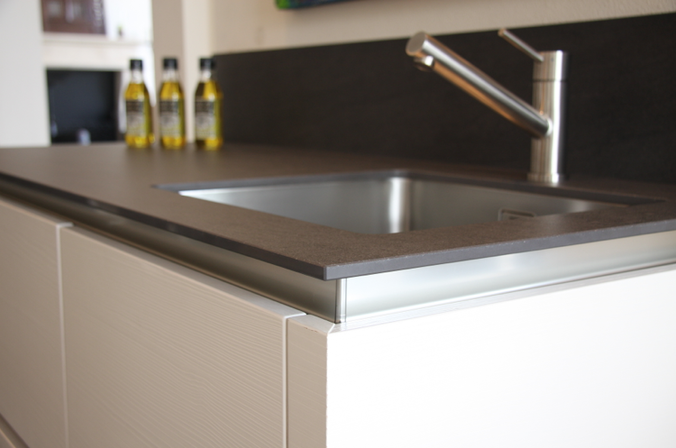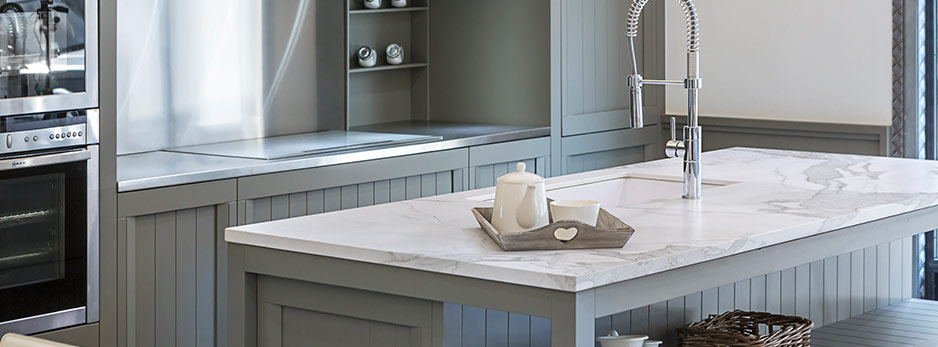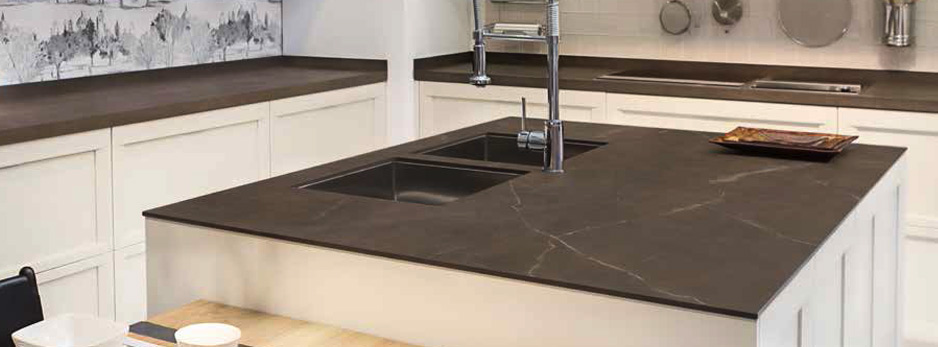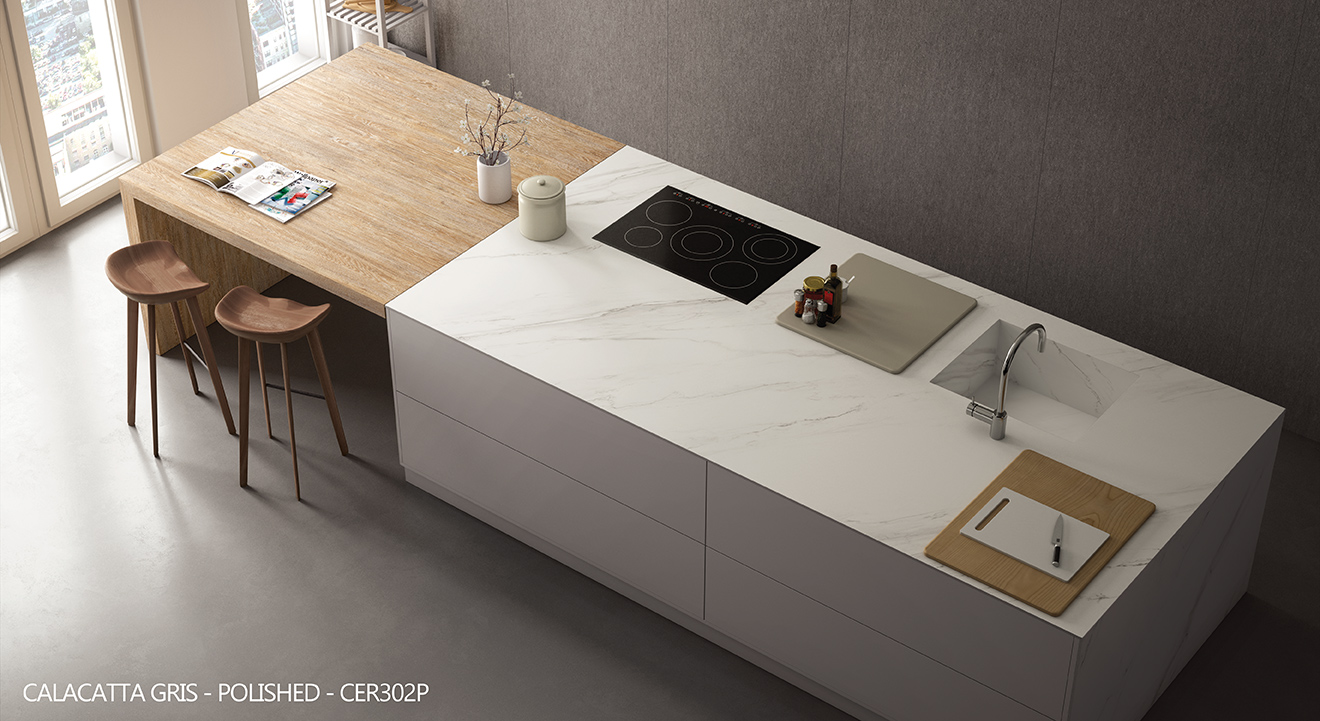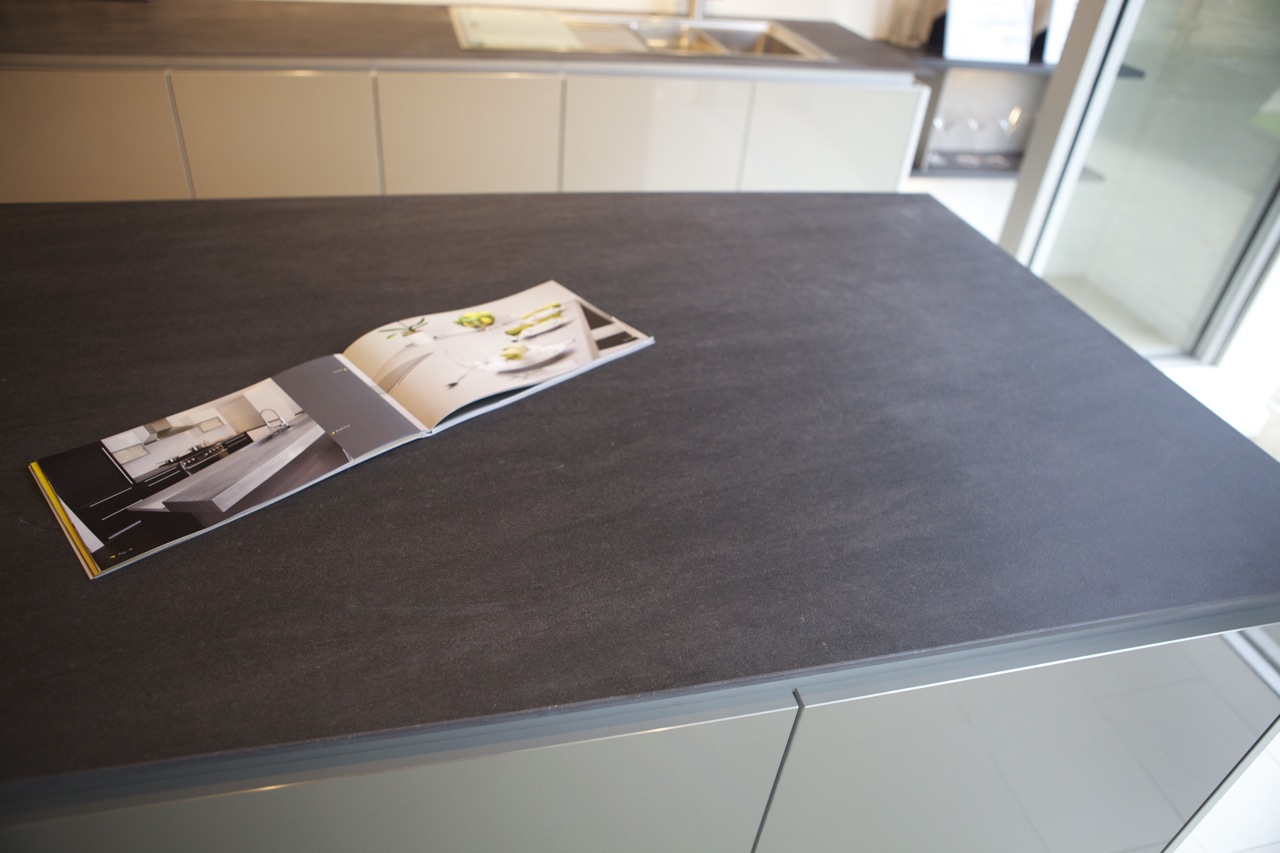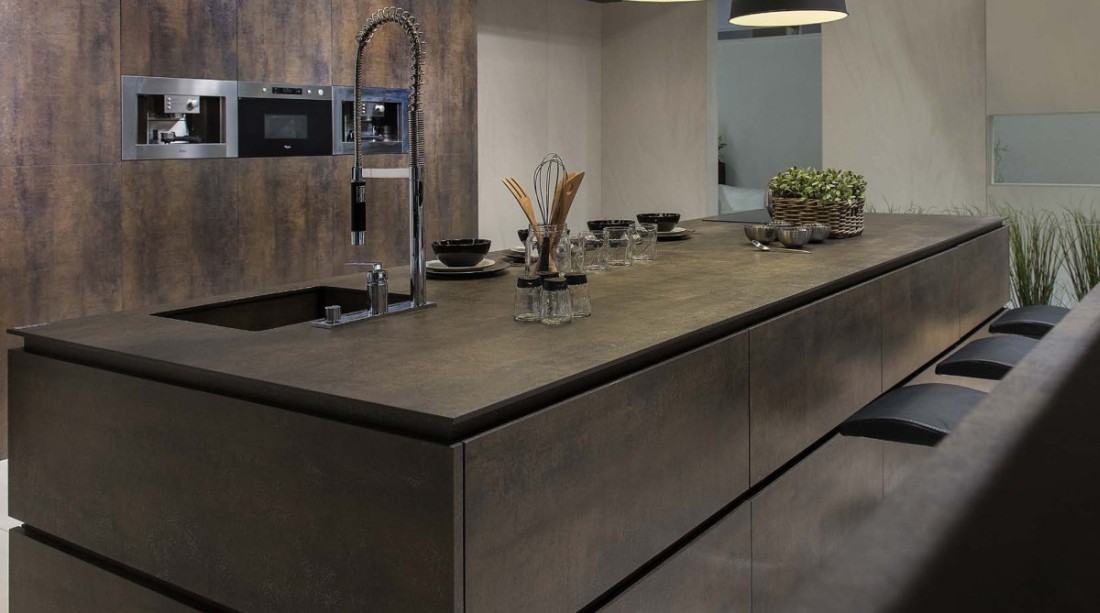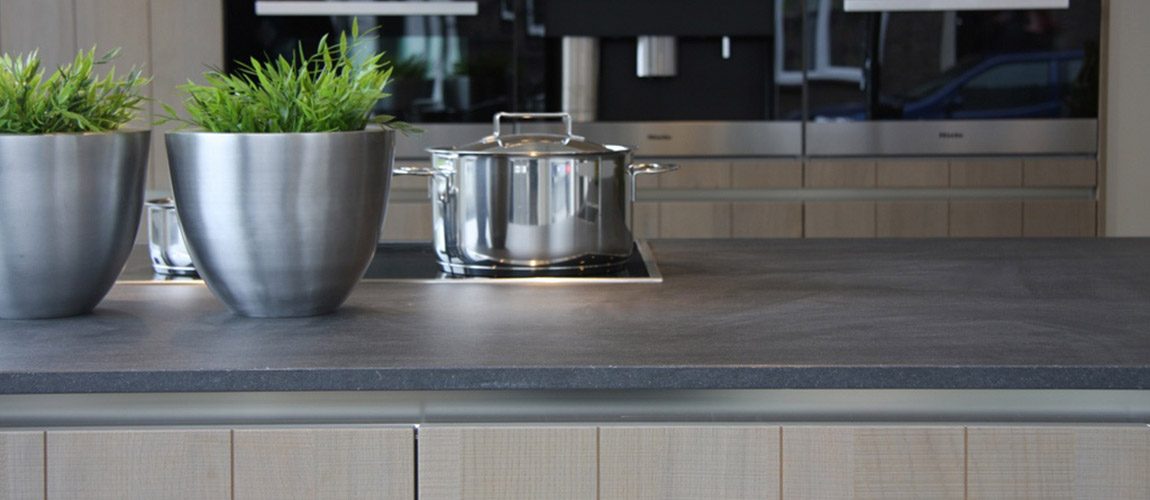The choice of countertop in the kitchen is a crucial one. Of course, it’s all about the look, but also about things like care or everyday handling. You are spoiled for choice and can choose from a variety of materials. The advantages and disadvantages of a ceramic worktop, you will find in the article.
Advantages of a ceramic worktop
Hygienic and easy to clean: Ceramic is fired at very high temperatures and sealed by pressure. So the material does not absorb moisture and gives mold and bacteria no chance. In addition, ceramic does not absorb odors. Also, the care is simple – because the material does not absorb water, you can simply wipe over with a damp cloth and already the ceramic worktop shines like new.The design of a ceramic worktop convinces most at first glance. Ceramics can also convince with other advantages:
- Cut-resistant and heat-resistant: The manufacturing process makes the material extremely robust. You can therefore cut directly on the ceramic worktop and even hot pots can not harm ceramics.
- Insensitive to acids: Unlike countertops made of natural stone, acids on a ceramic worktop leave no lasting traces. It does not even need to be impregnated!
- Large selection: Ceramic worktops are available in different colors – everything from snow white to a noble dark shade is possible. Also as far as the thickness is concerned, you can decide how thick or thin the ceramic worktop should be.
Disadvantages of a ceramic worktop
Despite the many advantages, there are a few disadvantages that you have to put up with in a ceramic worktop:
- Limitation in length and width: Ceramic worktops must be fired. Although the manufacturers can now burn relatively large plates in their ovens, with a little more than three meters in length and just under 1.5 meters in width is usually over. So if you have a kitchen unit or cooking island that is longer or wider than these dimensions, a separating edge will be visible.
- Price: Due to the elaborate production and exact adaptation of a ceramic worktop, you are moving in the highest price segment. The running meter can cost as much as € 1000 – making ceramic worktops more expensive than countertops made of natural stone or glass.
 Flower Love
Flower Love
